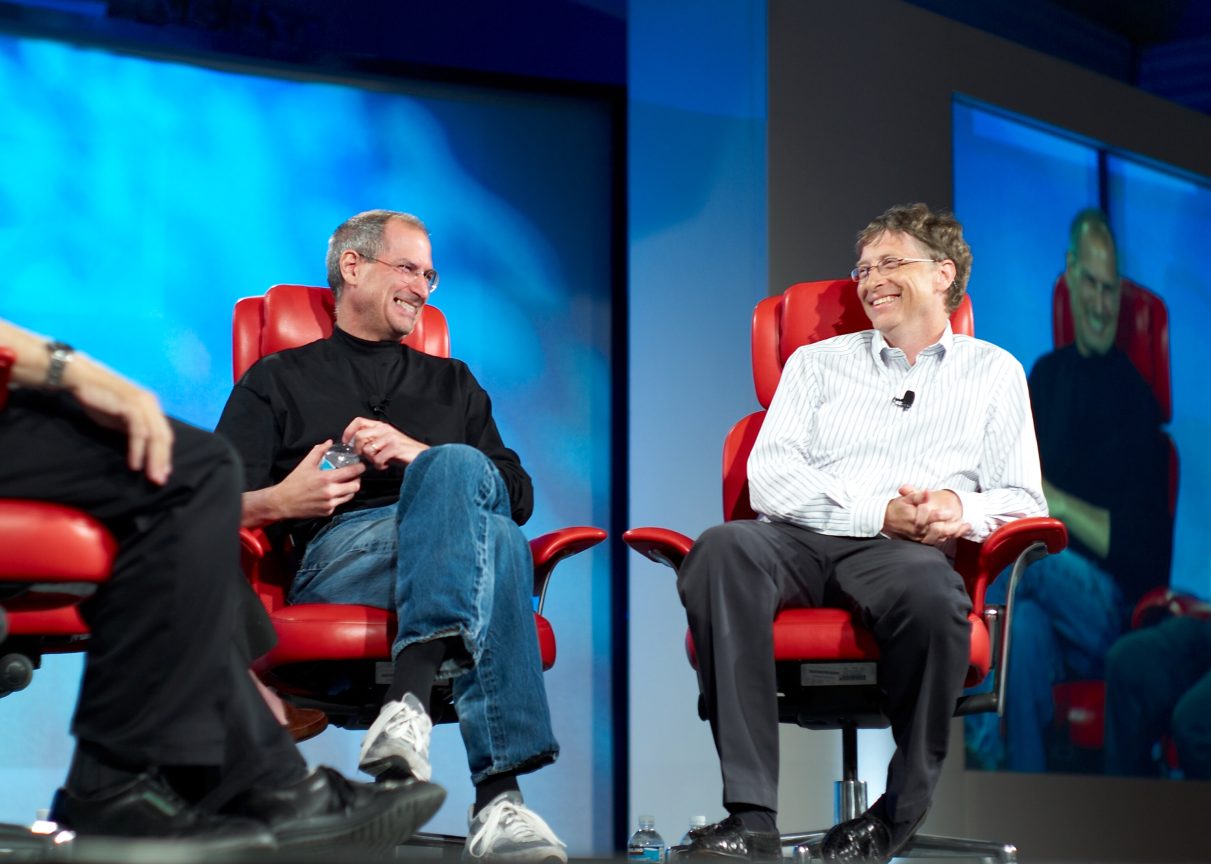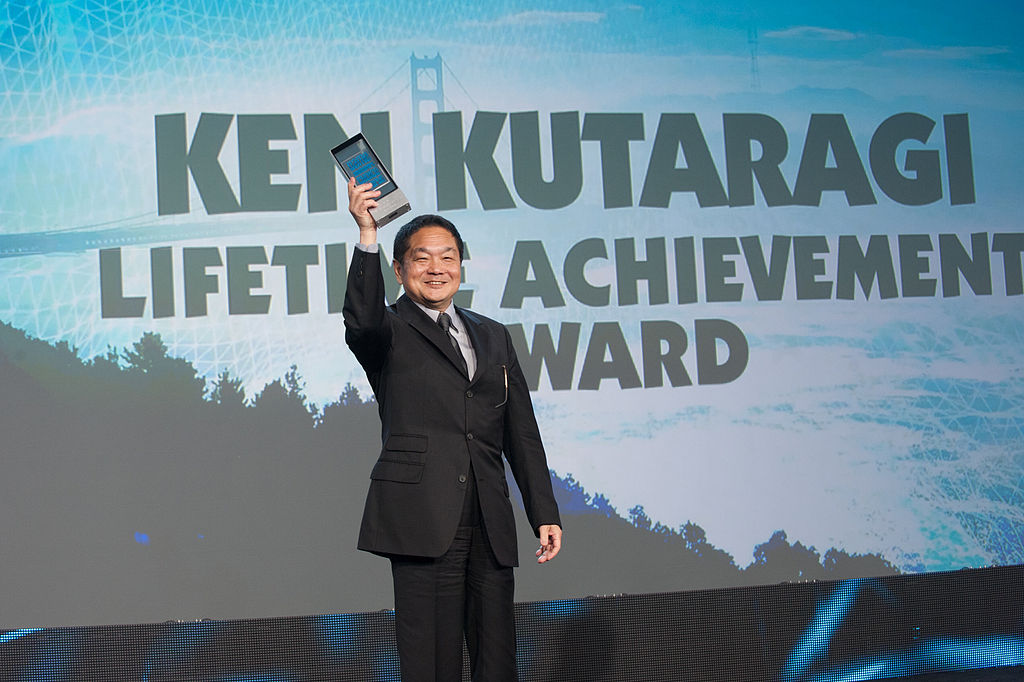Leaving the cult of entrepreneurship: Intrapreneurs are the true drivers of innovation.

- An intrapreneurship offers creative, driven people the autonomy to succeed and organizations the innovations they need to thrive.
- Yet, the obsession with entrepreneurs has led many to view starting a business as the primary means of securing a promising career.
- For those who cannot take the financial and personal risks associated with entrepreneurship, becoming an intrapreneur may provide an enticing middle path.
We are obsessed with the icon of the entrepreneur. In the U.S., Oprah Winfrey, Jeff Bezos, Bill Gates, and Jack Dorsey have been deified alongside the likes of generals and Jesus. Their life stories have become scripture. Their message translates into a gospel of entrepreneurship, one that proclaims starting a business to be the way, the truth, and the good life.
Nor is this belief system limited to Western cultures—though it takes different forms abroad. In its 2018–19 report, the Global Entrepreneurship Monitor found that adults across the world viewed entrepreneurship as a good career choice and an indicator of high social status. The coronavirus pandemic has since strengthened those beliefs. Some even forecast the post-pandemic world to be a golden age for would-be entrepreneurs.
Not to say there’s anything wrong with that. Self-motivation, the desire to take charge of your career and seek personal success, is an admirable trait. And while perhaps exaggerated for PR sheen, the biographies of entrepreneurs can inspire others to persevere, self-actualize, and hone their skills.
As with any obsession, however, this one has a dark side: A dogmatic sense that starting a business is the best path toward a fulfilling career. This mindset is a trap. While many desire to become entrepreneurs, many shouldn’t. They may have innovative ideas but lack a passion for the business side. They may have strategic insight but can’t responsibly take the leap of financial faith every business owner must.
Fortunately, it’s not an all-or-nothing proposition. There is a middle path that can lead to a rewarding career. That of the intrapreneur.
Intrapreneurs and the entrepreneurial spirit
The word intrapreneur was coined in the late 70s to describe employees who act like an entrepreneur within an established organization. Through what marketing strategist Dorie Clark calls “entrepreneurial side ventures,” intrapreneurs develop original solutions, processes, or products. They can then sell their ideas to the higher-ups, use those innovations to motivate for change, and even transform entire industries.
The entrepreneurial spirit is the same, yet their position within an organization offsets the risks of starting a new business.
In a Big Think+ interview, builder capitalist Nathalie Molina Niño interrogated the corporate commandment of “fail fast, learn faster.” This precept can be devastating for many would-be entrepreneurs:
“This idea of failing fast and putting everything at risk, whether it’s your company or your job, and thinking you’re going to do fine, you can just start over and figure it out and do it better next time,” she said. “[But] there is no next time when bankruptcy means you lose absolutely everything. There is no next time when you don’t have family members that can loan you money. There is no next time when you don’t have those sort of safety nets and trust funds and 401(k)s. And guess what? Most people don’t have those things.”
And that’s just one danger. To succeed, entrepreneurs must also face competition, market upheavals, and the maintenance of their personal branding. It’s little wonder then that the failure rate of start-ups is so high—beginning at 20 percent in the first year and slowly creeping up every year after until peaking at a staggering 90 percent.
For many innovative-minded people, becoming an intrapreneur may not only be a responsible career path, one that still offers a sense of control, satisfaction, and ambition attainment. It may be the superior option.
In his book Driving Innovation from Within, innovation consultant Kaihan Krippendorff argues that true innovation doesn’t originate with lone mavericks taking on tradition and winning. It comes from the collaboration of institutions and employees. He cites email, mobile phones, and the internet as byproducts of such collaborations.
“This path of self-directed, employee-generated innovation has historically been far more prevalent than we understood. Indeed, the innovative ideas of employees have done more to shape society than those of entrepreneurs,” he writes.

Pushing the boundaries
While pop culture is awash with the stories of entrepreneurs who struck it rich, the successes of intrapreneurs typically go unsung.
“Even people who are hailed as great innovators, such as Steve Jobs, did not actually invent much of anything—but had the vision and marketing skills to make existing ideas more enticing, and to make other people want to buy them,” writes Tomas Chamorro-Premuzic, CIO at ManpowerGroup. The cavalcade of Apple engineers and designers whose names appear on the company’s patents bear this out.
Then there’s Ken Kutaragi, father of the Sony PlayStation and textbook intrapreneur. Odd as it may sound today, Sony Corporation once held no interest in video games. The company considered them a childish fad. But through his connections at Nintendo, Kutaragi began taking on gaming side-projects: first a sound chip for the Super Nintendo and then a disk-based system add-on for the console.
Nintendo later killed this add-on project, but Kutaragi convinced Norio Ohga, then CEO of Sony Corporation, to adopt the project and develop the system as a standalone. And the PlayStation was born.
What’s interesting about Kutaragi’s story is that he represents a single link in a chain of intrapreneurs that built the modern video games industry.
The first video game cabinets were commercial recreations of side projects developed by university engineers, students, and technicians. In the late 60s, Ralph Baer was working for Sanders Associates when he developed the “Brown Box,” a prototype that would later become the Magnavox Odyssey, the first home video game system. A toy company called Nintendo would later license the Odyssey for sale in Japan, and its intrapreneurs would begin innovating on the concept. These engineers included Gunpei Yokoi, father of the Game Boy (God’s gift to traveling families before smartphones).
Kutaragi would become the CEO of Sony Interactive Entertainment and preside over the development of the PlayStation 2, the best-selling video game console to date. And it was his example that led four Microsoft intrapreneurs to envision and champion the Xbox.
Today, the video games industry is worth billions of dollars, and in North America, it has surpassed the film and music industries combined in revenue.

Intrapreneurial slack at Kodak
As always, the middle path comes with tradeoffs. Intrapreneurs can be well-rewarded for their efforts—see Kutaragi’s promotions within Sony—but they share the windfall of their efforts with their organization. And while there are fewer risks, no career strategy can reduce the number to zero. Intrapreneurs may have to sacrifice their off hours to work on pet projects or put their reputation on the line within the organization. They also have to sell their ideas, a big ask at organizations where higher-ups suffer from frozen thinking.
For their part, organizations shoulder the risks associated with innovation and bringing new ideas to the market. Granted, they are better equipped to weather the occasional failure and learn from its mistakes. Such setbacks nonetheless take their toll.
Yet, the risks of not cultivating intrapreneurs within an organization may be even more hazardous.
Consider the example of Kodak. Kodak dominated the photography market during the 20th century, but today it’s no longer a player. From the outside, it may seem as though the digital revolution took the company by surprise. Unable to pivot, they were swept away by those filmless doodads and gizmos.
That’s not quite the case.
In a story surprisingly similar to Kutaragi’s, a Kodak engineer named Steven Sasson saw the promise of digital cameras. In fact, he invented the first in 1975. But there was no Ohga at Kodak to steward Sasson’s invention, and the higher-ups viewed it as a distraction to their business model—an unnecessary investment given their virtual monopoly of the photography market.
“They were convinced that no one would ever want to look at their pictures on a television set,” Sasson told the New York Times. “Print had been with us for over 100 years, no one was complaining about prints, they were very inexpensive, and so why would anyone want to look at their picture on a television set?”
Fostering intrapreneurs in house
The intrapreneurial path is only accessible if organizations are willing to cultivate it. By now, the financial advantages should be obvious. By funding an intrapreneur’s product, policy, or application, the organization shares in any potential profit, and because the intrapreneur is already an employee, the expense of innovation is likely far less than if the company had to seek it elsewhere.
Perhaps one reason more organizations don’t cultivate such a spirit is that they fear losing employees who will strike it solo. But research suggests that such a worry is unfounded.
A Deloitte survey found millennials to be more loyal if they felt in control of their career and their organizations supported their leadership ambitions. Respondents also favored employers who demonstrated a strong sense of purpose beyond financial success and creating meaning in work. And a study out of the University of Birmingham showed a positive correlation between autonomy and job satisfaction.
In sum, today’s employees seek prosocial, meaningful, and innovative careers with a sense of autonomy. It’s simply the popular perception that entrepreneurialism is the only place where such work can be reliably found. If organizations want to tap into this wellspring of talent, they need to provide opportunities for their people to build their capabilities within a culture of immersive learning. They need to pave the way for intrapreneurs.
Watch more of this expert on Big Think+
Foster a culture of intrapreneurship with lessons on Big Think+. Our e-learning platform brings together more than 350 experts, academics, and entrepreneurs to help your organization develop 21st-century skills such as leadership and an innovation-ready mindset.
Join marketing strategy consultant Dorie Clark as she teaches lessons on:
- Why Entrepreneurial Side Ventures Benefit Employees and Their Employers
- Pursuing Entrepreneurial Side Projects
- Becoming a Recognized Subject Matter Expert
- Reinventing Your Brand
- Being a Better Colleague
Learn more about Big Think+ or request a demo for your organization today.





